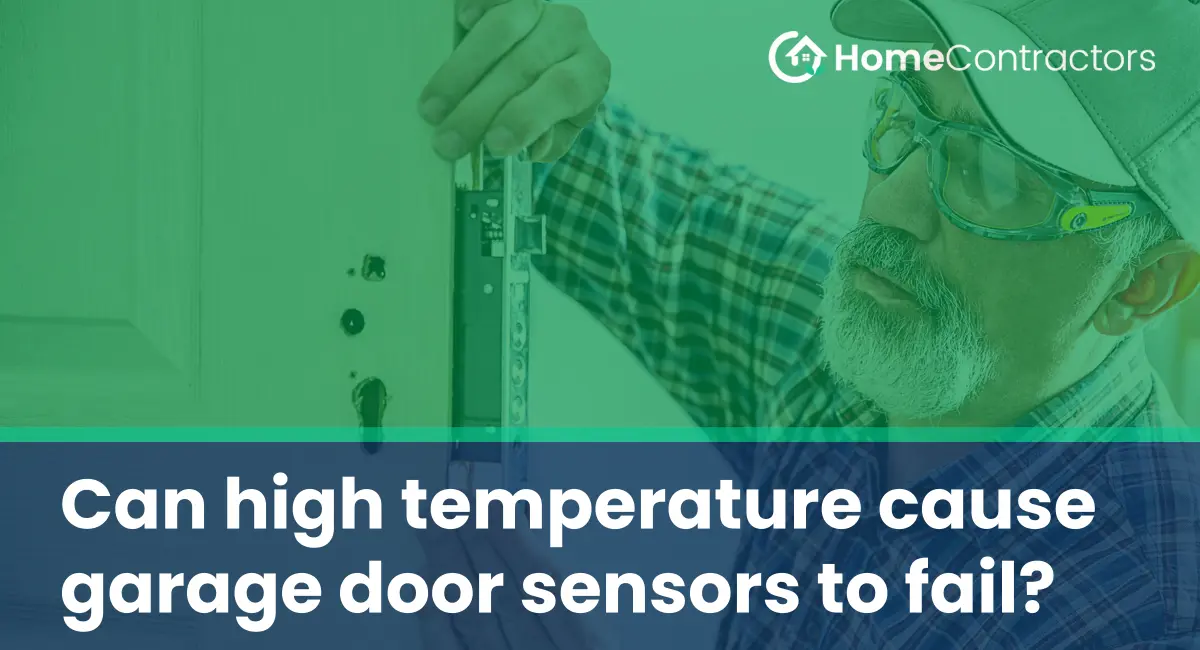Garage door sensors are essential safety devices that prevent accidents and injuries by detecting obstacles or people in the door’s path and reversing its operation. However, many homeowners may wonder if high temperatures can affect the functioning of these sensors. In this article, we will explore whether high temperatures can cause garage door sensors to fail and provide some tips to mitigate potential issues.
Understanding Garage Door Sensors:
Garage door sensors typically consist of two units – a transmitter and a receiver. These components are installed on either side of the door, near the ground. The transmitter emits an invisible beam of light to the receiver across the doorway. When this beam is interrupted, such as by an object or a person, the sensors communicate with the garage door opener to stop or reverse the door’s movement.
Effects of High Temperatures:
While garage door sensors are designed to withstand various weather conditions, high temperatures can potentially impact their performance. Excessive heat can lead to the following issues:
- Sensor Misalignment: High temperatures can cause the components of the sensors to expand, which may result in misalignment. Misaligned sensors may not accurately detect obstacles or people in the door’s path, which can lead to accidents.
- Sensor Interference: Intense heat can interfere with the transmission of the infrared beam between the transmitter and the receiver. This interference can disrupt the communication between the sensors, resulting in the failure of the garage door to respond properly to obstacles.
Preventive Measures:
While it is challenging to completely eliminate the effects of high temperatures on garage door sensors, the following preventive measures can help mitigate potential issues:
- Regular Maintenance: Regularly clean the sensors to remove dust, dirt, or any other debris that may accumulate on their surfaces. Additionally, ensure that the sensors are securely mounted and aligned correctly.
- Shade the Sensors: If feasible, try to shade the sensors from direct sunlight using an awning, curtains, or any other similar methods. By reducing the exposure to direct sunlight, the temperature around the sensors can be lowered, minimizing the risk of overheating.
- Insulate the Garage: Proper insulation of the garage can help maintain a more moderate temperature inside, reducing the extreme heat that the sensors may be exposed to. Insulation can include using weather stripping around the door to seal gaps and insulating the walls and ceiling.
- Use a Heat Shield: Consider installing a heat shield or reflective material on the ceiling above the sensors to deflect some of the intense heat away from them. This can provide an additional layer of protection against heat-related issues.
While garage door sensors are designed to withstand varying weather conditions, high temperatures can potentially affect their performance. Sensor misalignment and interference due to heat can lead to malfunctioning, compromising the safety features of the garage door. By regularly maintaining and cleaning the sensors, shading them, insulating the garage, and using heat shields, homeowners can reduce the risk of temperature-related sensor failures. However, if issues persist, it is recommended to seek professional help for further inspection and repair to ensure the proper functioning of garage door sensors.
